Stringing is an equally fascinating subject given the many patterns tried over the years. The primary strings used were made from the intestines of animals mainly sheep and through the years was known as “cat gut”.
To make a string numerous very fine strips of the stomach lining are twisted and stretched together, then dried and coloured. The techniques used today are the same as back in the 1880′s. Being animal tissue it explains why gut, when wet or placed in humid conditions, can expand and contract to a point where breakages can occur even in storage and frames can be distorted or warped under the immense pressure strings are placed under.
In the 1880′s racquet design for tennis exploded with new shapes, grips and string patterns.
The public was inundated with weird patterns with the promise of more spin, more power, better sweet spots or less breakages.
A sample are presented below.
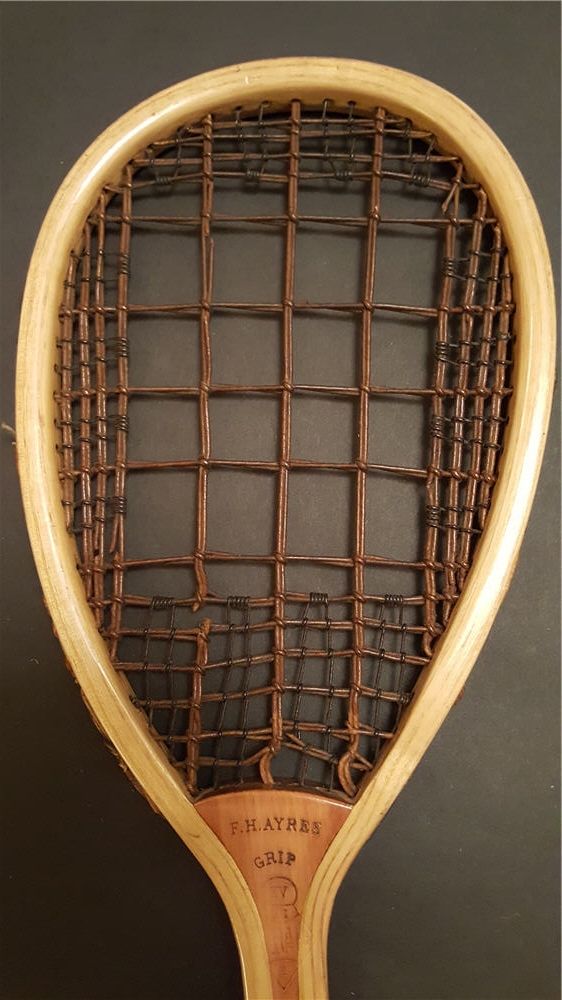
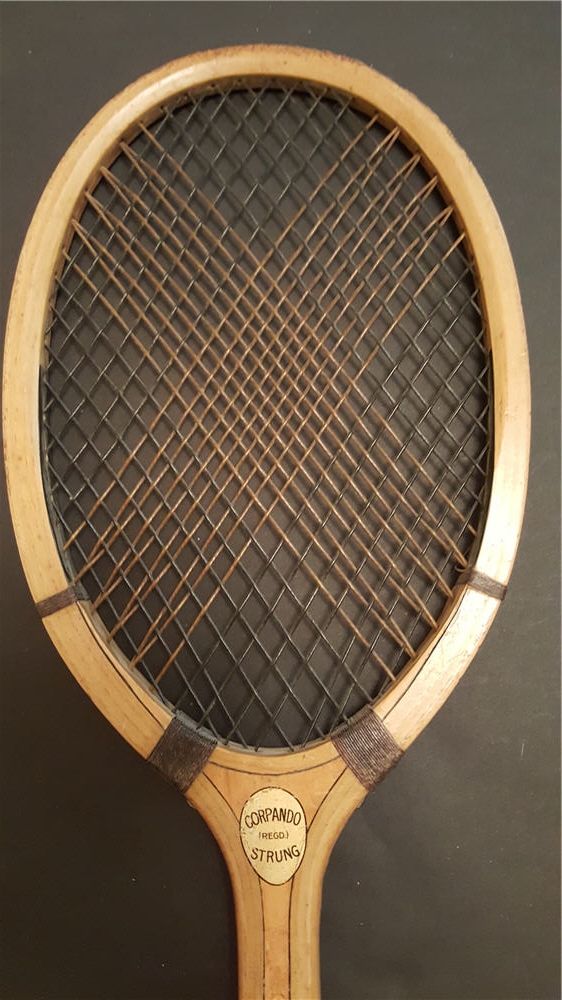
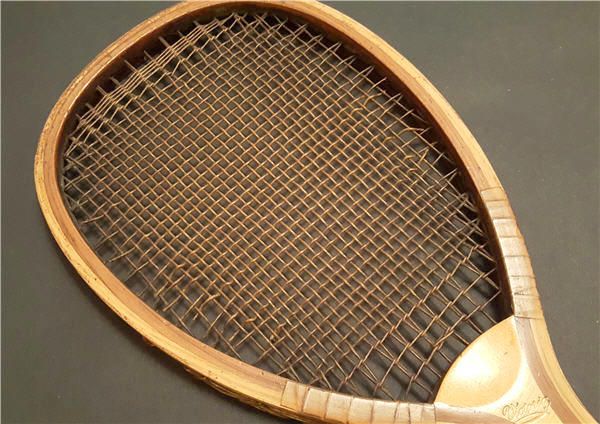
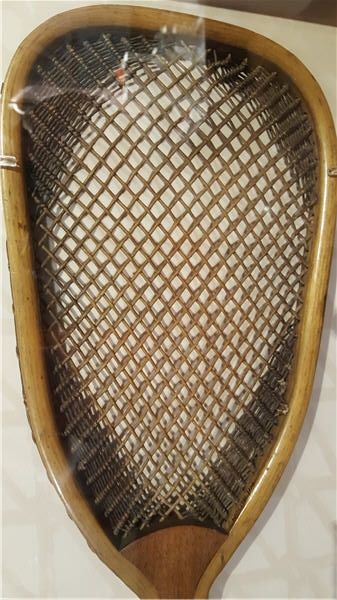
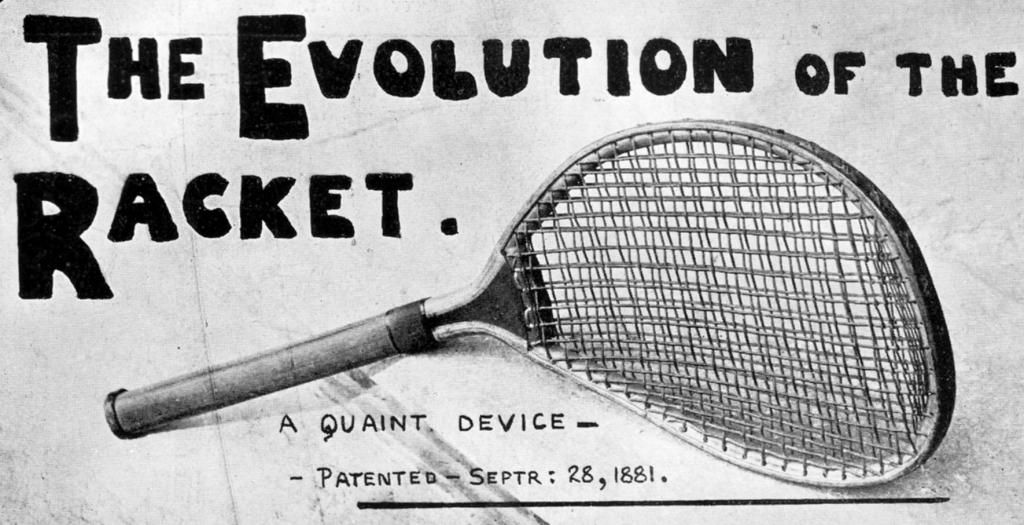
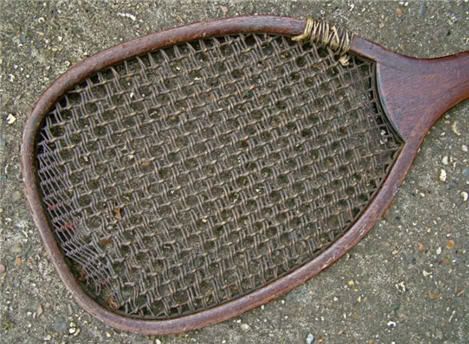
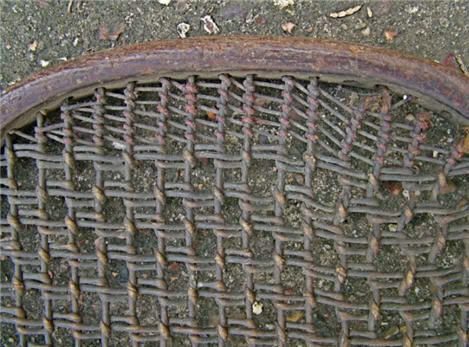
While early strings were made of ‘Gut’ often called cat gut, they were indeed made from animal intestines until the plastics and nylons appeared in the 1940-s-1950′s. Original gut was 1.5mm -2mm thick and often they tried different grades and thicknesses between vertical and cross strings to improve performance. The use of two vertical double strings and different cross strings are visible here with original trebling in place. This a common pattern on early racquets.
The small strings at the top are called ‘Trebling’. The strings wrapped across the mains and crosses, often in a square pattern around the sweet spot is called ‘Purling’.
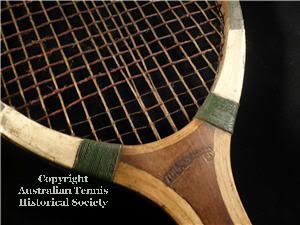
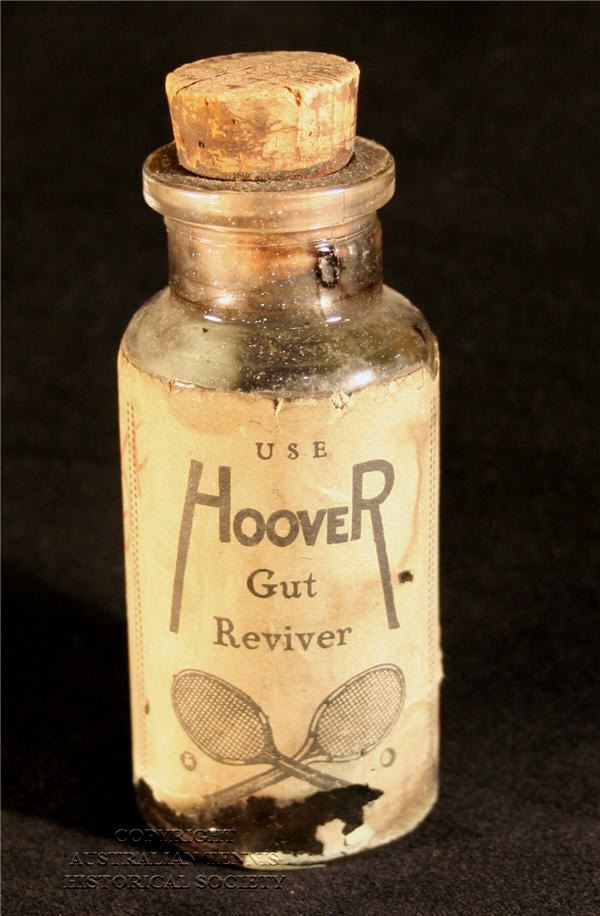
Stringing also changed direction, so to speak, in the 1920′s when the first metal head/wooden handle racquets arrived complete with piano wire stringing. Two well known companies were Birmal Aluminium Co. in the UK who launched an all metal racquet called the ‘Birmal’ followed by a metal wood combination called the ‘Birmal Ace’. Over in the USA, Dayton were very successful with their metal head wood handle products for over 50 years and are very popular with collectors for the variety of head styles and frame colours that became available. The picture below is a Dayton Flyer with a nice trebling and frame wrap. They were renowned for a wonderful twang when the piano wire made contact with a ball and you can’t imagine how long balls would last.
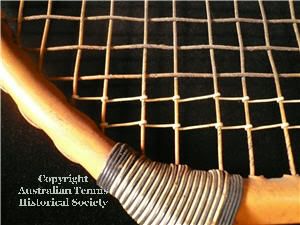
The stringing below is from an Australian Brewer Centurion. Note the green, double trebling and below this a patented Godfrey (New York, USA c 1929) pattern which uses two different string types double strung in both the mains and cross strings to form a dense sweet spot. Based on the actual patent drawing the string set is close in overall look but not accurate, yet they may well be original.

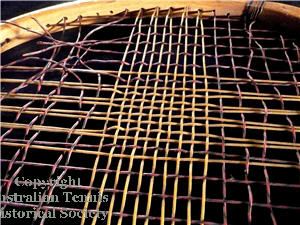
The photo below shows the additional double strung mains plus the purling strings.
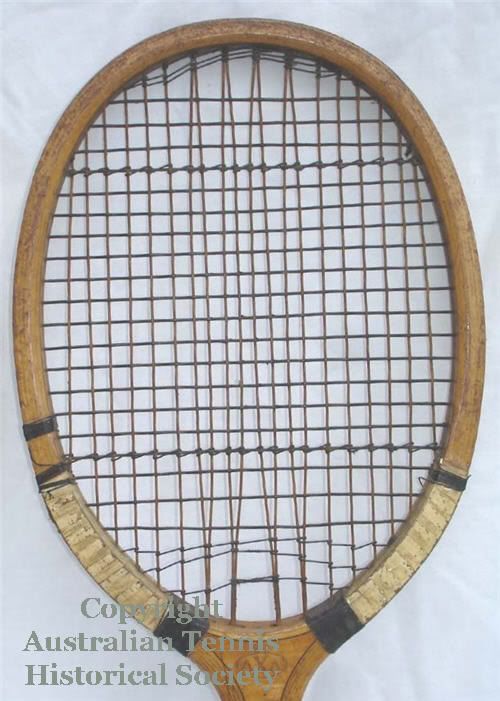
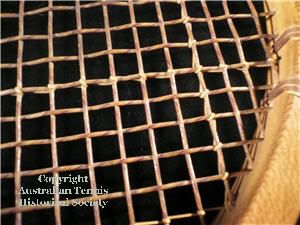
Close up of purling strings
Older style string patterns included diagonals and verticals criss-crossed with diagonals which created a honeycomb style effect. Even today these still appear from time to time and in 2008 we have the recent launch of the ITF approved Power Angle racquets which feature diagonal string patterns. This product comes from the same designer of the Mad Raq stringing pattern that was patented in the early 1990′s. Other desirable diagonal strung racquets include the MacGregor Bergelin, Protagon Diagonal (Germany), Major Octodiagonal, Geo Star, Aequalis, TAD Davis Top Spin and many from Volkl.
The MADRAQ design is shown below on the left, yet on the right we have a 1907 patent granted to Forrester, courtesy of Siegfried Kuebler’s book. In Jeanne Cherry’s book, ‘Tennis Antiques and Collectibles’ page 34 there is a shot of an equally similar design from 1887 by the Benetfink Co. The photo below these is a very early handmade racquet with diagonal and perpendicular stringing. Photo courtesy of Rolf Jaeger.The actual racquet now resides in Tennis Australia’s Collection.
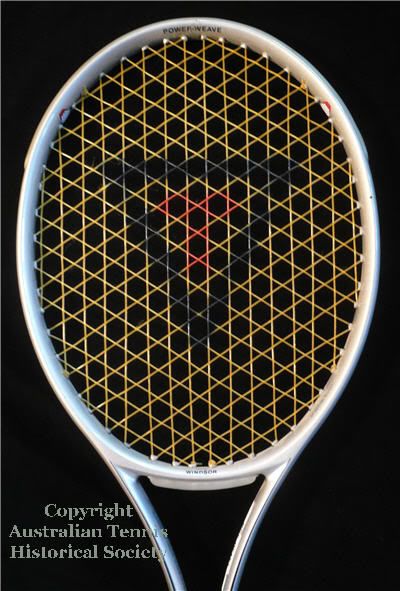
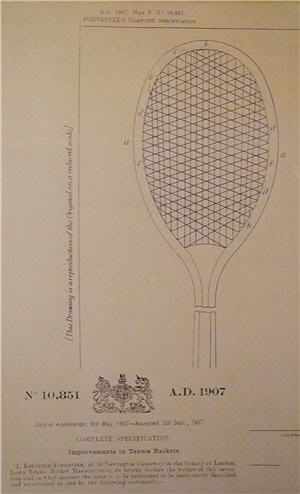
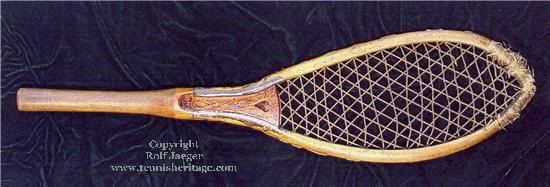
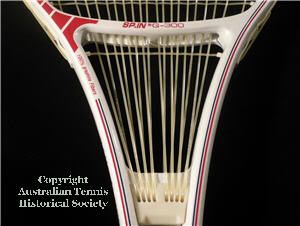
The Sp.in G300/ Roxpro shows how racquet design has allowed variable string lengths to improve sweet spot performance. Often these designs fall foul of the rules and are either banned or permitted after a review which is apparently what happened to this model.
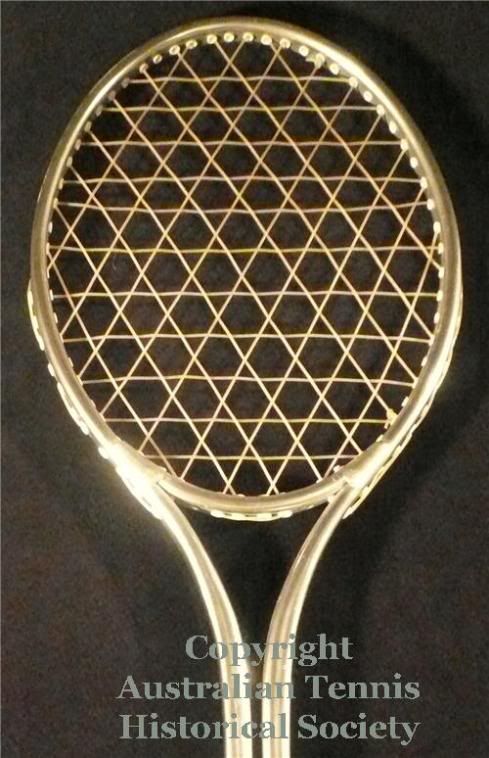
The mid 70′s metal racquet is a Danlo with a ‘Spider web’ string set up.
A very rare treat is to see the German invented “spaghetti” stringing system (Vilsbiburger racquets) which was used by Ille Nastase at the Aix-en-Provence tournament in early October 1977 against Vilas. So annoyed at being beaten by this amazing racquet, Vilas lobbied the ITF to have it banned which it promptly was under a ruling that deemed the two layered string pattern was a form of double hitting. The strings as they impact the ball, slide across the surface to a point where under pressure they spring back delivering an incredible top spin effect, so much so, that on the receiving court the ball would literally bounce over your head.

because the white plastic rollers are just like macaroni.
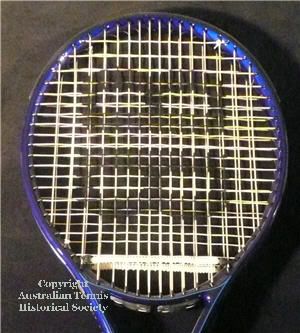
There is no double hitting so it is legal. The gap between the sets is 9mm.

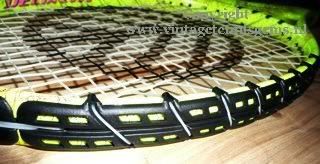
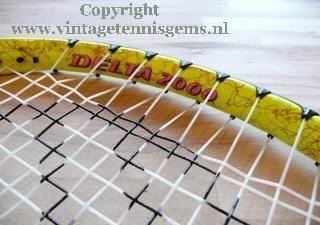
Above is a Rox Pro Delta 2000 which also features an unusual stringing system.
Photos courtesy of Hans from www.vintagetennisgems.nl
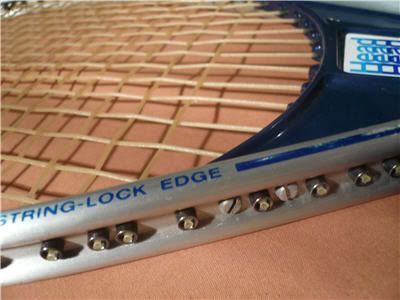
In the early 1980′s, Head marketed this String Lock system which enabled
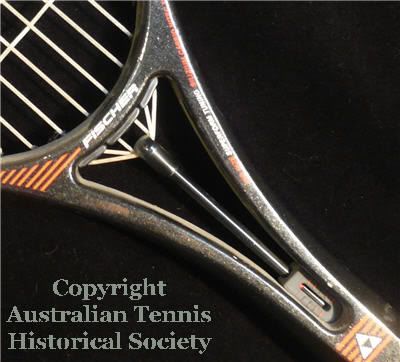
This Fischer Superform Tuning Racquet allows the player to adjust string
tension by using a key lock located in the butt cap.
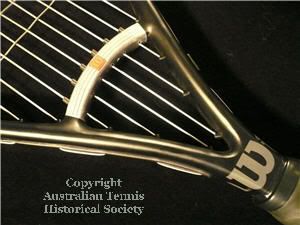
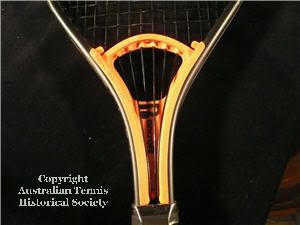
Other examples of Long main stringing by Wilson and Bancroft (Markhill Germany)
It again is interesting to note the new 2010 Prince long string models like the Wilson are on
the market once more.
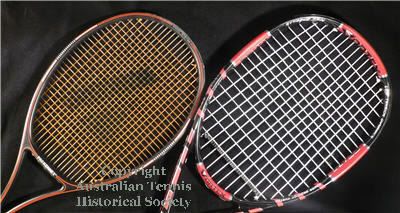
At the very top of this article, you will see how using double stinging in the main and cross strings produces a very tight stringing pattern. In 1985, Pro Kennex produced a range of Micro Stringing racquets. This one is called the MICRO ACE. This pattern is 28 x 22 compared to the newly released Vortex Extra Spin 14 x16.
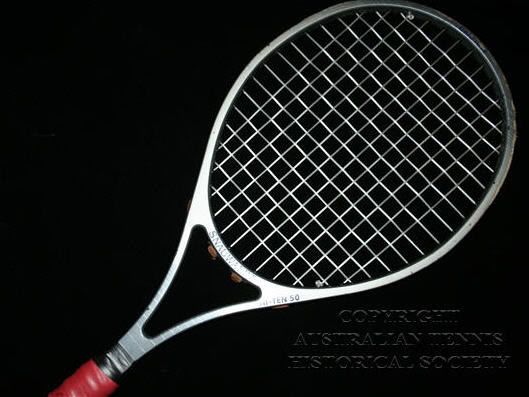
Snauwaert produced this amazing open strung racquet in the late 1980′s early 1990′s.
It is the Hi-Ten 50, graphite model. The 16 x 12 strings are 1.85mm thick and finding replacement strings is very hard. Apparently whipper snipper grass cutting cord will give the visual effect.

You must log in to post a comment.